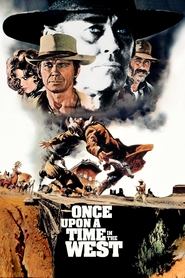The opening of Once Upon a Time in the West is a virtuosic evocation of time passing. However, for most of its duration, the sequence kills time with action. The unusual miniature activities of hat water drinking and fly baiting are magnified by Leone’s close-ups, and become widescreen spectacle. The stillness of the sequence also serves to build suspense. This is a self-reflexive western, so we know (and Leone knows we know) that there will be a shoot-out when the train finally arrives. Though the killers’ progress is temporarily stilled at the station, they are nonetheless on a journey that will end with someone being
killed. In the meantime, they pass time in various entertaining ways. But
ultimately, by killing time, Leone’s killers hasten their own death. When the train finally arrives, they do not have time to kill their intended victim, because he is a faster shot, so they are killed. With hindsight, we see that they have in fact been in limbo, waiting for their own death.
— Richard Misek: Dead time: Cinema, Heidegger, and boredom (2010)
[In an interview by journalist Lawrence Grobel in 1981, Henry] Fonda wonders why on earth Leone wanted him for the part of Frank in Once Upon a Time in the West. He tells Grobel how Leone demanded that he shave off the beard he had grown for the part and remove his dark contacts to show is baby blue eyes, and how he understood what Leone had in mind only when seeing the finished film with an audience—their shock when the camera reveals the face of the killer whose gang is in the process of eliminating a settler family: "Oh my god, it's Henry Fonda!" This is a chilling moment, and it is very much of the spirit of 1968, when America's image in the world shifted.
— Alexander Horwath (Interview with Roy Gundmann and Fatima Naqvi in Cineaste, Summer 2025)

